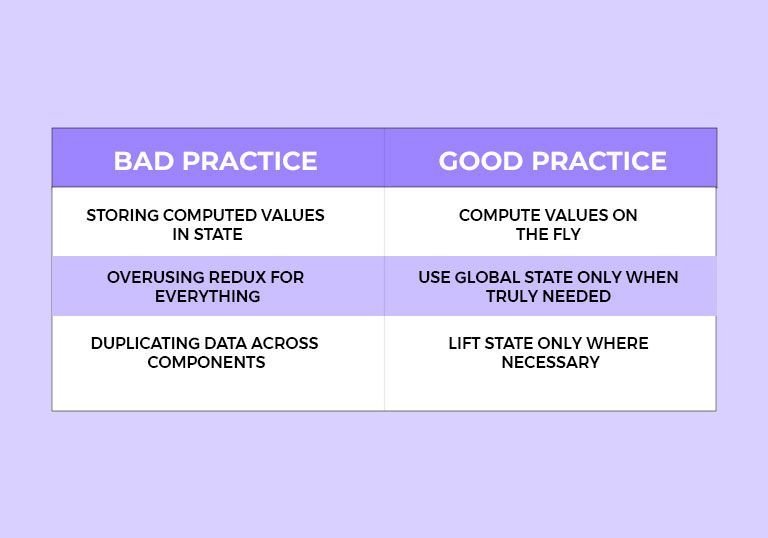When I first started working with React.js years ago, I was amazed at how quickly I could put together components and see things come to life. However, over time, as projects grew larger and more complex, I realized something important: React doesn’t tolerate sloppy habits.
If you’ve ever opened up a React codebase that felt like a maze of files, states, and props, you know what I mean. Developers, even experienced ones, often repeat the same mistakes. Some slow down performance, some cause bugs that are hard to track, and others just make the project impossible to maintain.
Having worked with teams at a leading ReactJS Web Development Company in India, I’ve seen firsthand how avoiding these pitfalls can save a lot of time and headaches. Let me walk you through the 10 most common mistakes I’ve seen in React development (and yes, I’ve made some of these myself). More importantly, I’ll share how to avoid them so your next project doesn’t turn into a headache.
Messy Project Structure
In small projects, it’s easy to just throw files into one folder. But as soon as the app grows, you’ll regret it. I once joined a project where all components, big and small, were in a single components folder. Finding and updating code was painful.
Fix it:
- Organize by feature or domain, not by file type.
- Keep shared utilities and reusable parts in a dedicated folder.
- Stick to consistent naming.
Think of structure as the foundation of your house; if it’s shaky, everything else suffers.
Putting Everything in State
This is a classic beginner mistake. I’ve seen developers store things like computed values, constants, or even API responses directly in local state when they didn’t need to. The result? Extra re-renders and unnecessary complexity.
Fix it:
- Keep the state minimal, only what changes and impacts the UI.
- Compute values on the fly if you can.
- Reach for global state libraries (Redux, Zustand, Jotai) only when truly needed.
State should be lean and purposeful, not a dumping ground.

Forgetting Unique Keys in Lists
It seems small, but forgetting proper keys for list items can create strange UI bugs. I’ve seen users complain about wrong items being updated because developers used indexes as keys.
Fix it:
- Always use a unique identifier like id.
- Avoid array indexes unless the list is 100% static.
React relies on keys to track changes; give it what it needs.
Overstuffed Components
I’ve opened files that were 500+ lines long, mixing logic, state, and UI all in one place. Debugging those? A nightmare.
Fix it:
- Break big components into smaller, focused ones.
- Pull logic into custom hooks.
- Keep UI parts focused on rendering only.
A well-split component structure makes your app feel cleaner and easier to maintain.
You may like this: Why React.js is Still the Go-To Framework for Modern Web Development in 2025?
Ignoring Performance
React is fast out of the box, but sloppy coding cancels that out. One project I worked on had unnecessary re-renders everywhere, and the app lagged despite being built in React.
Fix it:
- Use React. memo, useMemo, and useCallback wisely.
- Implement lazy loading and code splitting.
- Profile performance with tools like Lighthouse or React Profiler.
This is where working with experts pays off. For example, the Best ReactJS Web Development Agency in India would never ship code without first checking performance.
Complicated Form Handling
Forms can turn messy fast. I’ve seen devs manually manage state for 20+ fields, only to get stuck fixing validation errors later.
Fix it:
- Use controlled components for better state handling.
- For bigger forms, go with Formik or React Hook Form.
- Don’t forget proper validation and error messages.
A well-structured form makes both users and developers happier.
Mixing Logic and UI
This is a sneaky one. It’s easy to throw business logic directly inside components, but over time, your components become overloaded.
Fix it:
- Separate presentation (UI) from logic.
- Use hooks for data fetching and heavy lifting.
- Keep components focused on rendering.
This approach makes your codebase modular and far easier to test.
Skipping Error Boundaries
Apps crash, that’s inevitable. What matters is how gracefully they handle it. Many React apps fail to implement error boundaries, resulting in users being presented with a blank screen.
Fix it:
- Wrap components in error boundaries.
- Show a fallback UI instead of breaking.
- Log errors with tools like Sentry or LogRocket.
A user should see “Something went wrong” rather than a white screen of death.
Ignoring Type Safety
Without type checks, bugs sneak in quietly and explode later. I’ve seen teams spend days debugging issues that could’ve been avoided with proper typing.
Fix it:
- Use PropTypes in small projects.
- Go for TypeScript in serious projects — it’s worth the learning curve.
- Define types for props, state, and APIs.
Many companies avoid this headache entirely by hiring a ReactJS Web Development Company in India that builds projects with type safety from day one.
Skipping Tests
Skipping tests feels like saving time… until something breaks in production. I’ve been in that position, and trust me, it’s not fun.
Fix it:
- Start small with unit tests for key functions.
- Use Jest and React Testing Library for components.
- Add end-to-end tests for complex workflows with Cypress.
Think of tests as insurance for your codebase.
Wrapping Up:
React.js is powerful, but like any tool, it can backfire if misused. By avoiding these mistakes: messy structure, overusing state, skipping keys, bloated components, poor performance practices, messy forms, mixed logic, missing error handling, no type safety, and zero testing, you’ll build apps that scale smoothly.
Of course, not every team has the time or expertise to handle all these challenges. That’s where the best ReactJS web development services in India come in. With the right guidance, you can skip the trial-and-error and focus on building apps that are fast, stable, and user-friendly.
At Vulture Concepts, we’ve seen firsthand how avoiding these pitfalls leads to faster development cycles, cleaner code, and better-performing applications. Whether you’re building your first MVP or scaling an enterprise-level solution, having a skilled team by your side can make the difference between just finishing a project and truly excelling with React.js.

